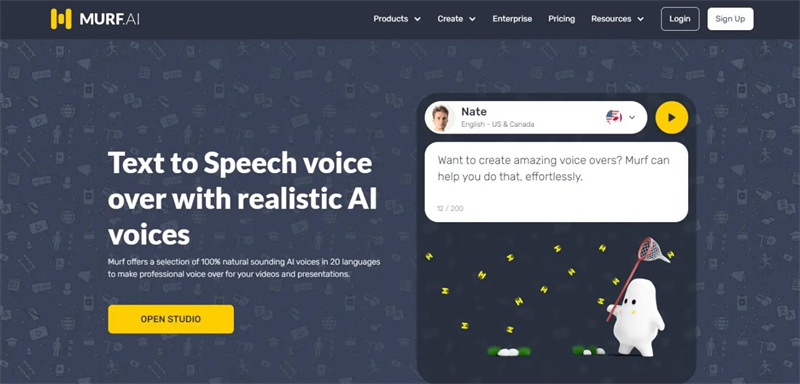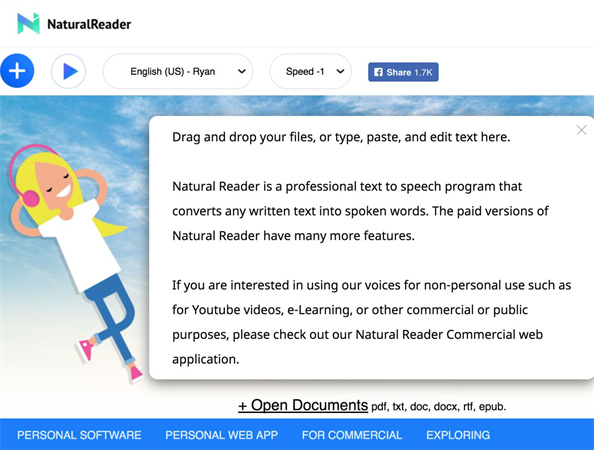Is Text to Speech a Real Voice
In the rapidly advancing realm of technology, one innovation that has significantly impacted our daily lives is Text-to-Speech (TTS) technology.
This groundbreaking development allows computers and devices to transform written text into spoken words, providing a unique auditory experience for users.
The growing popularity of TTS begs the question: Is Text to Speech a real voice?
In this article, we will delve into the inner workings of TTS technology, explore the factors that contribute to the perception of a real voice, discuss the ethical implications of its use, and present a list of top-rated TTS software options available today.

So, whether you’re a tech enthusiast exploring the latest trends or an AI researcher conducting experiments, keep reading to get a better understanding of Text-to-Speech technology.
Part 1: Understanding Text-to-Speech Technology
At its core, Text-to-Speech technology is a fascinating blend of linguistics, computer science, and artificial intelligence. The process begins with written text, which is then fed into a TTS engine.

The engine interprets the text using linguistic rules, phonetics, and pronunciation guidelines to convert it into audible speech. Initially, TTS systems were relatively basic, producing monotonous and robotic voices that lacked natural intonation and cadence.
However, over the years, the evolution of TTS technology has been remarkable. Thanks to advancements in AI and machine learning algorithms, modern TTS systems have become highly sophisticated.
These systems can now analyze vast amounts of data, including recorded human speech, to improve pronunciation, intonation, and naturalness. Neural TTS, a recent breakthrough, utilizes deep learning techniques to create remarkably realistic and expressive voices.
Part 2: What Makes Text-To-Speech Voices Sound Natural?
The quest to achieve a genuinely natural voice in TTS (Text-to-Speech) technology has been ongoing for quite some time now. While significant advancements have been made, with some synthetic voices coming remarkably close to human speech, there are still discernible differences that set them apart.
One of the key factors contributing to this distinction is prosody – the rhythm, intonation, and stress in speech. Human speech is incredibly rich in prosody, allowing for emotional conveyance and emphasis that make communication more engaging and expressive.
Synthetic voices have made significant strides in improving prosody through the application of deep learning and neural networks. These advancements have allowed synthetic voices to incorporate more prosodic features, resulting in speech that sounds more natural and expressive.
As researchers continue to explore and refine TTS technology, the pursuit of a fully natural and indistinguishable synthetic voice continues.
The challenge lies in replicating the intricate complexities of human speech, including the subtle variations in prosody that make our communication so engaging and meaningful.
Part 3: Ethical Implications of Text-to-Speech
1. TTS in Media and Entertainment Industries:
Text-to-Speech has disrupted the media and entertainment landscape, opening up new possibilities for content creation and accessibility.
While TTS can facilitate audiobook production, improve accessibility for the visually impaired, and streamline voiceovers in various media projects, it also raises concerns about copyright infringement. TTS-generated voices can imitate real voices to a remarkable degree, potentially leading to unauthorized use of copyrighted material.
2. Social Implications and Potential Misuse of TTS Technology:
The widespread availability of TTS technology poses ethical challenges, particularly regarding misinformation and manipulation. TTS-generated voices can be manipulated to produce false information, deepfakes, or even impersonate real individuals convincingly.
This misuse of TTS has raised alarm about the potential to spread misinformation, undermine trust, and harm individuals or organizations.
3. Privacy Concerns with TTS-Generated Content:
As TTS systems continue to evolve and become more sophisticated, the growing concerns surrounding privacy and data security intensify. With the advancements in voice cloning technology, made possible by TTS, there arises the potential for unauthorized use of someone's voice for malicious purposes.
This includes activities such as voice phishing or engaging in fraudulent schemes. The need to address these concerns and safeguard individuals from such misuse becomes increasingly paramount in our ever-advancing technological landscape.
Part 4: List of Best Text To Speech Software
There are several top-rated Text To Speech (TTS) software options available for users to choose from. Here are some of the best TTS software options out there:
1. Murf
Murf, an exceptional Text-to-Speech (TTS) software, stands out with its utilization of state-of-the-art neural networks.

With an extensive selection of natural-sounding voices available in multiple languages, Murf offers unparalleled versatility, making it the perfect choice for a diverse range of applications.
Whether it's for educational purposes, multimedia content creation, or accessibility features, Murf's cutting-edge technology ensures an immersive and engaging experience for users worldwide.
2. Speechify
Speechify stands out with its exceptionally user-friendly interface and a wide range of intuitive features designed to enhance the user experience.
With its robust cloud synchronization capabilities, Speechify enables seamless switching between devices, ensuring that users can enjoy the convenience of high-quality TTS voices anytime, anywhere.

Whether you're a student, professional, or simply someone who loves to consume content on the go, Speechify is the perfect companion for efficient and enjoyable audio content consumption.
3. Synthesys
Synthesys has quickly emerged as a top contender in the field of Text-to-Speech (TTS) technology, offering an unparalleled level of realism in its voices.
Powered by advanced AI algorithms, its state-of-the-art system effortlessly generates voices with exceptional clarity, precision, and nuance, captivating listeners with their lifelike qualities.

Whether you are working on a professional project that demands utmost quality or creating engaging and immersive content, Synthesys is the go-to solution that guarantees an extraordinary audio experience.
4. Natural Reader
Natural Reader continues to be a widely preferred option among users, primarily because of its exceptional ease of use and seamless integration across multiple platforms.
It stands out with its remarkable blend of naturalness and customization, empowering users to personalize voices according to their unique preferences and requirements.

This level of detail and flexibility makes Natural Reader an ideal choice for individuals seeking an immersive and tailored text-to-speech experience.
The Bottom Line
Text-to-Speech technology is revolutionizing the way we interact with audio content. Its wide range of applications has opened up unprecedented opportunities for multimedia projects, accessibility initiatives, and educational endeavors.
However, as TTS continues to advance, it's crucial to consider the ethical and social implications associated with this technology. Additionally, we must not overlook the potential for misuse of TTS-generated content.
Ultimately, Text-to-Speech technology remains a powerful tool with immense potential to enhance audio accessibility and engagement in our multimedia landscape.







Home > Text to Speech > Is Text to Speech a Real Voice
Select the product rating:
Joshua Hill
Editor-in-Chief
I have been working as a freelancer for more than five years. It always impresses me when I find new things and the latest knowledge. I think life is boundless but I know no bounds.
View all ArticlesLeave a Comment
Create your review for HitPaw articles